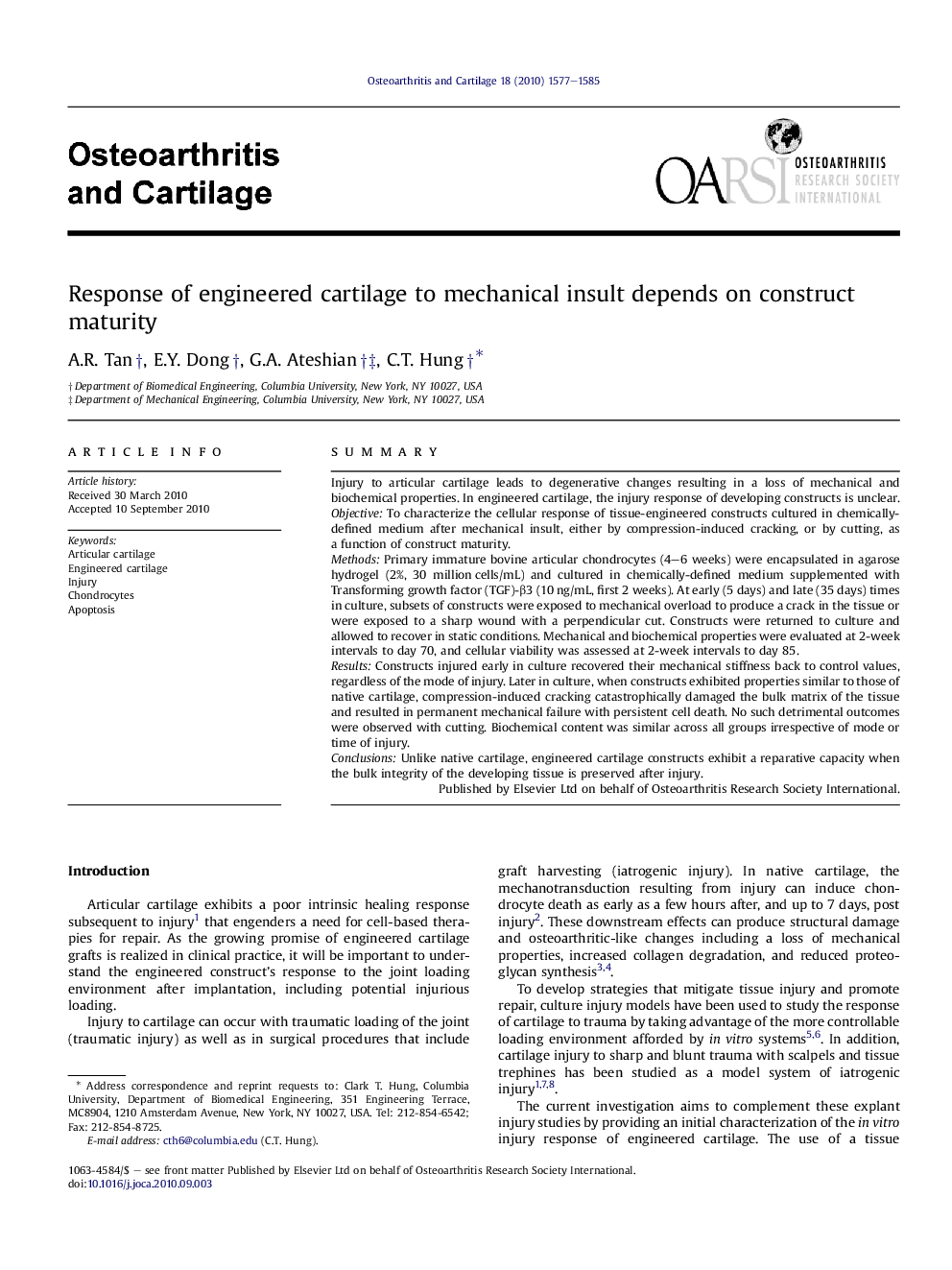| Article ID | Journal | Published Year | Pages | File Type |
|---|---|---|---|---|
| 3380944 | Osteoarthritis and Cartilage | 2010 | 9 Pages |
SummaryInjury to articular cartilage leads to degenerative changes resulting in a loss of mechanical and biochemical properties. In engineered cartilage, the injury response of developing constructs is unclear.ObjectiveTo characterize the cellular response of tissue-engineered constructs cultured in chemically-defined medium after mechanical insult, either by compression-induced cracking, or by cutting, as a function of construct maturity.MethodsPrimary immature bovine articular chondrocytes (4–6 weeks) were encapsulated in agarose hydrogel (2%, 30 million cells/mL) and cultured in chemically-defined medium supplemented with Transforming growth factor (TGF)-β3 (10 ng/mL, first 2 weeks). At early (5 days) and late (35 days) times in culture, subsets of constructs were exposed to mechanical overload to produce a crack in the tissue or were exposed to a sharp wound with a perpendicular cut. Constructs were returned to culture and allowed to recover in static conditions. Mechanical and biochemical properties were evaluated at 2-week intervals to day 70, and cellular viability was assessed at 2-week intervals to day 85.ResultsConstructs injured early in culture recovered their mechanical stiffness back to control values, regardless of the mode of injury. Later in culture, when constructs exhibited properties similar to those of native cartilage, compression-induced cracking catastrophically damaged the bulk matrix of the tissue and resulted in permanent mechanical failure with persistent cell death. No such detrimental outcomes were observed with cutting. Biochemical content was similar across all groups irrespective of mode or time of injury.ConclusionsUnlike native cartilage, engineered cartilage constructs exhibit a reparative capacity when the bulk integrity of the developing tissue is preserved after injury.
